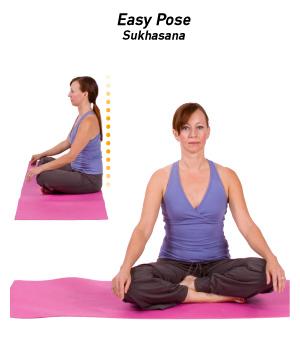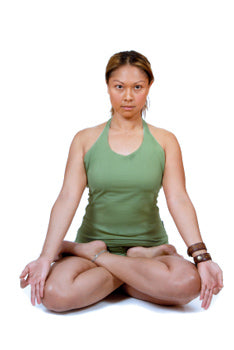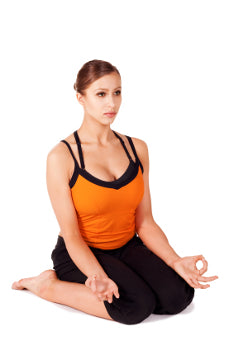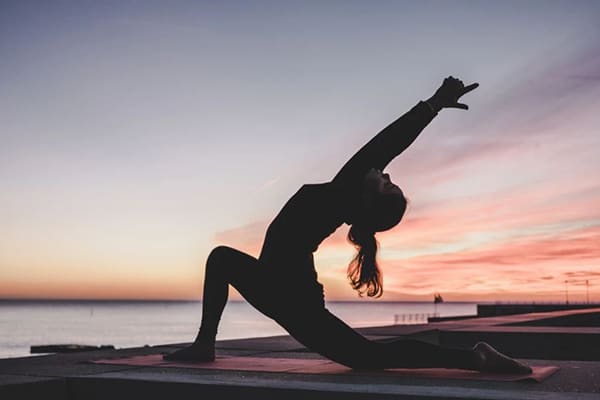Yoga & Meditation

Hey there, mindfulness mavens and flexibility fanatics! Are you ready to hop on board the bliss train with a first-class ticket to Tranquility Town? In our go-go-go modern world, it's time to slow down, unplug, and bask in some yoga and meditation merriment. Imagine the power of cat-cow meets the peace of deep breaths under a willow tree – that’s right, Everyday You're mixing up a delightful cocktail of feel-good vibes and inner calm!
Why Yoga & Meditation Are BFFs in the Urban Jungle
In the midst of the concrete jungle, your yoga mat is your private island and meditation is your mental coconut water. Together, they’re like peanut butter and jelly – a perfect match of movement and stillness that heals the body, soothes the soul, and polishes the mind until it sparkles like a shiny disco ball.
Meditation is a vital aspect of yoga that goes back thousands of years. The Upanishads, a collection of yoga philosophies dating back to around 500 BCE, defines yoga as a practice of holding back the senses to unite with one's supreme state of being. The Hindu story, The Bhagavad Gita, dating from around from 200 BCE, conveys the message that meditation is important in overcoming suffering. Even the sage Patanjali's Yoga Sutras, written around 150 BCE, define yoga as "Yogas Citta Vritti Nirodhah." This Sanskrit phrase translates to "the restraint of the modifications of the mind."
Practicing meditation, along with yoga asanas, can be a natural portal to the inner depths of your mind. In yoga, your true essence is always there, buried under illusions and falsehoods. When you learn to calm the fluctuations of your thoughts, you begin to peel away layers of false beliefs. As you reveal your natural state of peace, you learn to practice yoga.
Benefits of Meditation
A regular meditation practice provides a world of physiological, psychological, and spiritual benefits. One definition of "yoga" is "union," referring to the unification of body, mind, and spirit. With asana, meditation, and "pranayama," (otherwise known as "breathing exercises") the threads are tied and unity becomes real.
Meditation offers its practitioners an abundance of benefits:
- Reduced anxiety, fatigue, and depression
- Regulated blood pressure
- Decreased heart rate
- Lowered levels of stress hormones, like cortisol
- Lowered cholesterol levels
- Regulated breathing and increased lung capacity
- Strengthened immune system
- Increased creativity
- Increased productivity
- Improved comprehension and memory
- Greater sense of well-being
- Greater sense of living in the present moment
- Greater sense of purpose
- Increased emotional stability and feelings of happiness
- Increased faith in one's spiritual system or religion
- Greater sense of compassionate self-awareness and acceptance
Meditation can be an important tool for achieving your highest states of health. It can balance and lift your moods, resulting in a more positive outlook on life. It can also help you gain clarity and perspective, which can help you to achieve your goals.

Mindfulness Meditation Practice
"Mindfulness" is a state of awareness that is non-reactive and non-attached. This type of meditation does not seek to transcend daily existence. It doesn't strive for metaphysical or psychic powers, like telepathy or psychokinesis. Mindfulness meditation brings calm and focused attention to the endless stream of thoughts floating through your mind, and to the sounds, scents, and motion of the world around you.
It can be very difficult to begin a meditation practice of utter mindfulness — that is, one entirely focused on emptying the self. Many beginners find it easier to learn by focusing attention on one sensation, object, or thought. The recipient of your attention might be:
- Your breath
- A bodily sensation, such as touch or smell
- A movement, such as asana
- An action, such as eating
- The flicker of a candle's flame
- An image of a deity, saint, or inspirational figure
- A "mantra," a Sanskrit word meaning "the repetition of a sound, syllable, or phrase"
- The visualization of a goal
- A value or virtue, such as love, compassion, or joy
Striking Yoga Poses for Good Vibes and High Fives
Enter the meditation mixology, where your mind becomes the bartender, and peace of mind is the special concoction. Whether you're sipping on a guided meditation or shaking things up with mindfulness, meditation is the magic ingredient for a happy and centered life. It's not just sitting still; it's a mental mixology of joy.



- Sit in a comfortable, upright position. Do not attempt to learn to meditate lying down, for you'll be more likely to fall asleep. Come into Easy Pose (Sukhasana), Hero Pose (Virasana), or Lotus Pose (Padmasana). If those are uncomfortable, try sitting on your heels in Thunderbolt Pose (Vajrasana). Adjust your position so your spine is erect. Sit with your head, neck, and spine in one straight line. You may also sit in a chair with your feet on the floor, arms and legs uncrossed.
- Close your eyes.
- Begin to regulate your breathing, inhaling for a count of five and exhaling for five. After a few deep breaths, breathe naturally again. Notice the sensation of the air as it travels in and out of your nose. Continue to bring your awareness back to your breath, in and out, in and out.
- Do not force yourself to concentrate. Simply notice when your mind wanders, then gently bring your awareness back to your breath. Consistently returning to the present moment takes patience and dedication. Be careful not to punish yourself for wandering thoughts.
- Now bring your awareness to the object of your focus. This might still be your breath. If it's a visual object, like a candle, soften your gaze.
- Maintain your awareness. When your thoughts start to wander, gently guide them back to the object of your focus. Don't fight the thoughts. Simply acknowledge them and let them pass, like clouds floating by in a summer sky.
- Do this exercise for 10 minutes a day, gradually extending your sessions to 20 or 30 minutes.
Meditation Moments That Make You Go "Ommmm"
- Guided Imagery: Take a mental vacay to your happy place – whether it's a sun-soaked beach or a snow-kissed mountain peak. Ah, the serenity!
- Mindful Breathing: Inhale the good stuff, exhale the blahs. It's like spring cleaning for your insides, and trust us, it feels fabulous.
- Loving-Kindness Meditation: Send some digital heart emojis to yourself and everyone you know. Spread that love like you’re sprinkling fairy dust!
Blending Yoga & Meditation into Your Day
Whether it’s a sun-salutation at sunrise or a contemplative moment with your morning cuppa, weaving these practices into your daily routine is as easy as pie. Sweet, sweet self-care pie, that is.
Roll up Your Sleeves!
So rise, shine, and align, folks! Yoga and meditation are here to zest up your life and blanket you in a cozy layer of chill. As we harmonize our hustle and bustle with some serious stretch and reflection, we transform each day from “ordinary” to “oh-so-extraordinary”. Part ways with stress, and say “yes!” to a life sprinkled with fun, flexibility, and oh-so-much zen.
Have you found a favorite yoga twist that tickles your fancy, or maybe a meditation mantra that’s music to your soul? Everyday Yoga would love to hear your experiences in the comment sandbox! Let’s share the heart-emoji highs and cheer each other on as we cartwheel down this uplifting path of yoga and meditation. Keep those vibes high, the asanas fly, and remember – every day is brighter when we’re lighter!🌟🎉🧘♂️
See you on the mat!
Namaste!


